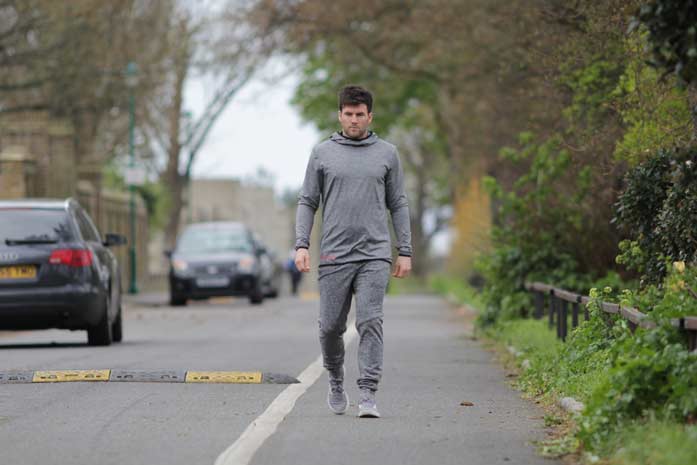The fashion industry has a waste problem. Each year, the industry uses around 342 million barrels of oil to produce synthetic materials such as polyester, nylon or acrylic. This equates to 8-10 per cent of global emissions, more than aviation and shipping combined. When these clothes are discarded, only a small portion of these fabrics can be recycled, and most end up simply binned. In the UK, this results in around 200,000 tonnes of textile waste going to landfills or incinerators each year.
As it happens, these synthetic materials are commonly used in making sportswear, which is a market recently valued at £13.8 billion and poised to see bigger growth. That said, the sportswear industry has a big role in the conversation surrounding textile waste. Considering the current focus on sustainability efforts from consumers, regulators, and industry leaders, it’s important to gain insight into whether the sportswear market is managing its textile waste properly.

Textile waste in review
Unfortunately, the aforementioned textile waste conditions are recurring problems that greatly contribute to air and land pollution and the broader picture of climate change. There is also a call for sustainable efforts with sportswear in particular, as the synthetic fibres used in production create microplastics. These pose threats to the marine environment as the microfibre pollution from laundry washing reaches the oceanways, which can lead to the gradual death of sea animals upon ingestion.
Interestingly, the onus has been placed on consumers to try and address the problem by massively reducing their consumption of fast fashion. However, fast fashion is only a part of the problem, as it is a pressing social issue concerned with promoting consumer behaviour reliant on endlessly buying to accommodate fast-paced trends. Above all else, the real responsibility lies with brands that have the deciding power and access to resources that can better control waste and usher in greener materials.
Emergence of sustainable sportswear
In line with the above and given the harm caused by textile waste, the UK Fashion and Textile Association (UKFT) has been working closely with the British Fashion Council and other stakeholders to attract government support for a new Fashion Industry Sustainable Change Programme. This initiative is focused on creating a world-leading circular fashion and textiles ecosystem in the UK. This means encouraging an economic system aimed at eliminating waste and promoting the continual use of resources by way of recycling and upcycling materials.
Brands have also taken the initiative to make sustainable sportswear that does not compromise function. For example, Oakley highlights their current line of hoodies, which feature fresh designs and colourways. Each hoodie is designed to withstand daily wear and tear, along with casual athletic pursuits. These hoodies are primarily made with premium materials such as fleece, cotton, and recycled polyester that help keep any wearer warm and comfortable. Notably, Oakley has joined the Better Cotton Initiative to source materials ethically. This ensures that the brand uses more sustainable materials during production, which in turn also reduces waste from synthetics.
Similarly, other brands like Patagonia are also emerging with more options for sustainable sportswear. Patagonia is recognised for their outerwear designed for outdoor activities like mountaineering. In line with its connection to nature, the brand prioritises the use of recycled fabrics and having a sustainable production process that marks it as an environmentally-conscious brand. In fact, as of 2023, over 90% of Patagonia’s fabrics are made of preferred materials, which include recycled nylons and virgin cotton.
Is textile waste in sportswear under control?
In addition to individual brand and private organisation efforts, governments are also taking a stand to control textile waste. The UK has the Waste Prevention Programme in place, which aims to support its waste reduction targets and net zero commitment. This is to be done by reducing textiles going to residual waste, increasing product utilisation, and stimulating a profitable textile recycling industry, all while promoting a circular economy.
Now, although there are plans to control textile waste, there are other pressing problems, such as the off-shoring of waste to countries like India and Pakistan, which already have an established specialised mechanical recycling industry. Presently, there needs to be more concrete action from the UK government to apply the goals stated in their Waste Prevention Programme and maximise local resources to address sportswear textile waste. Besides sustainable production, a focus on using eco-friendly materials like ethically sourced cotton, fleece, and recycled materials should be the norm in producing sportswear to reduce waste from synthetic fibres. It is essential that this issue is addressed properly to account for the nuance of the situation instead of simply providing solutions on a single front.

















